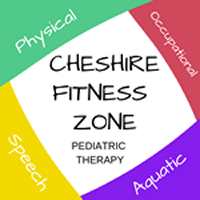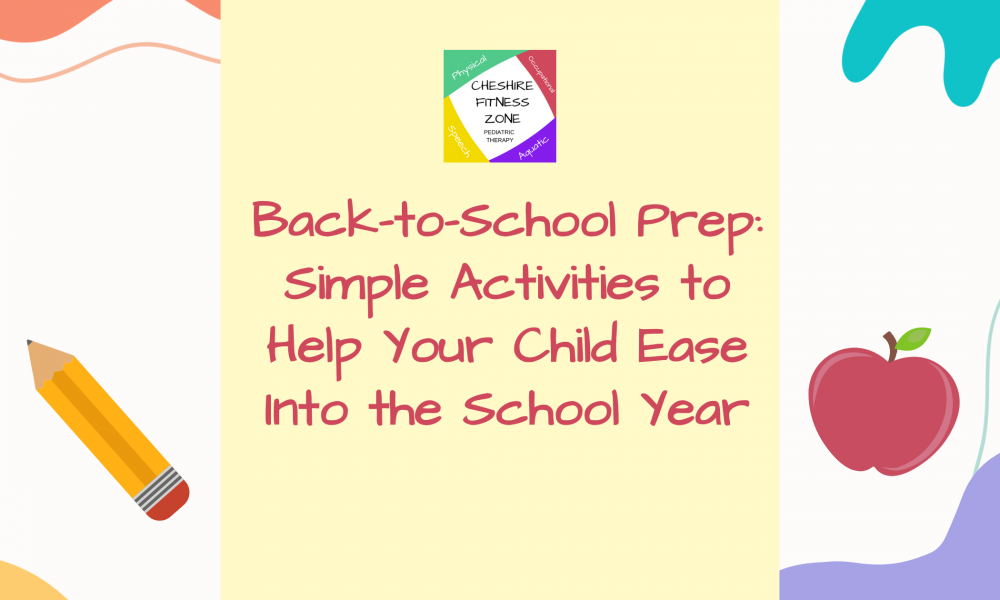Back-to-School Prep: Simple Activities to Help Your Child Ease Into the School Year
As July comes to a close, many families start thinking about the upcoming school year. While shopping for supplies and organizing backpacks are important, helping your child adjust to the daily routines and expectations of school might make the biggest difference.
Kids do best when they feel prepared and confident. The good news is, there are simple things you can do at home over the next few weeks to help your child ease into the school year.
Start with Routine
One of the most helpful ways to prepare for school is to reintroduce structure to your child’s day. Begin shifting bedtime and wake-up times a little earlier each week. You can also add in small parts of the school day, like having breakfast at the table or setting aside quiet reading time.
If your child benefits from visual supports, a simple picture schedule can help them understand what’s coming next and feel more in control.
Here are a few ideas to try:
Make a morning checklist together
Use pictures or simple words to show steps like brushing teeth, getting dressed, and packing a backpack. Review it each morning as practice for the school routine.
Set up a pretend school morning
Choose a day to “practice” waking up, eating breakfast, getting dressed, and packing a lunch, even if you’re not going anywhere. Keep it playful and low-pressure.
Create a bedtime routine chart
Include 2 to 4 simple steps such as taking a bath, putting on pajamas, and reading a book. Go through the steps at the same time each night to help your child get used to a consistent evening rhythm.
Build Independence with Everyday Tasks
Building independence can ease first-day jitters and help your child feel more confident throughout the school day. Many of the tasks children are expected to do at school can be practiced right at home.
Here are some easy ways to encourage independence:
Practice lunch skills
Pack a lunchbox and have your child practice opening and closing containers, peeling fruit, or unwrapping snacks on their own. Use the same items you’ll pack during the school year so they get comfortable handling them.
Let them take the lead in getting dressed
Give your child extra time to put on socks, shoes, or zip up their jacket without help. These small steps build fine motor skills and confidence.
Play “school day” at home
Set up a backpack station where your child can practice packing and unpacking a lunchbox, water bottle, and a few school supplies. Make it fun with a timer or a checklist to follow.
Make Time for Movement
Movement helps children stay focused, manage transitions, and feel more regulated throughout the day. Adding physical activity into your child’s day can support body awareness, balance, and stamina, all of which are helpful at school.
Here are a few movement-based activities that build school-ready skills:
Create an indoor obstacle course
Use pillows, chairs, and painter’s tape to make a course they can climb over, crawl under, and hop through. Narrate the steps like “First crawl under the chair, then jump five times on the pillow.”
Play follow-the-leader with actions
Include motions like marching, jumping, tiptoeing, or walking backwards. This encourages listening, coordination, and flexibility.
Practice backpack walks
Fill a backpack with light items and have your child carry it around the house while walking up and down stairs or transitioning between rooms. This helps build strength and comfort with everyday school movements.
Encourage Everyday Communication
Supporting your child’s communication skills can help them participate more confidently in classroom routines and social situations. Everyday interactions are full of opportunities to build vocabulary, listening, and expression.
Try these simple ways to practice language at home:
Play a storytelling game
Take turns adding to a made-up story, one sentence at a time. This builds sequencing, creativity, and listening.
Use books as conversation starters
Ask questions like “What do you think will happen next?” or “How do you think that character feels?” Encourage your child to explain their answers using complete thoughts.
Practice common classroom phrases
Role-play asking for help, answering attendance, or starting a conversation with a classmate. Make it playful by using dolls, action figures, or taking turns being the teacher.
A Simple Weekly Focus for August
To keep things manageable, focus on one area each week. Repeating small routines daily helps your child build familiarity and confidence.
Week 1: Routines
Adjust sleep and meal times. Introduce simple morning and evening routines that match the school day.
Week 2: Independence
Let your child take more ownership of self-care tasks like dressing and packing snacks.
Week 3: Movement
Include daily physical play that builds strength, coordination, and attention.
Week 4: Communication
Talk about what school will be like. Practice asking questions and expressing needs.
Prep for Back-to-School this August!
Whether your child is entering school for the first time or returning after a break, a little bit of preparation in August can make the first day feel a lot more comfortable.
And if your child works with therapists or has specific needs, you can always reach out to your team for personalized suggestions that fit right into these activities.



